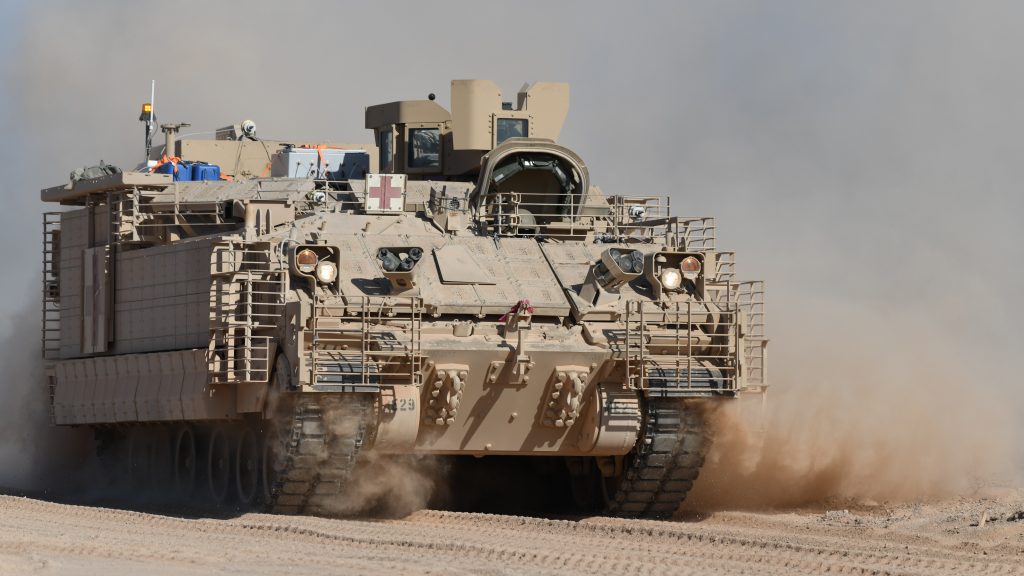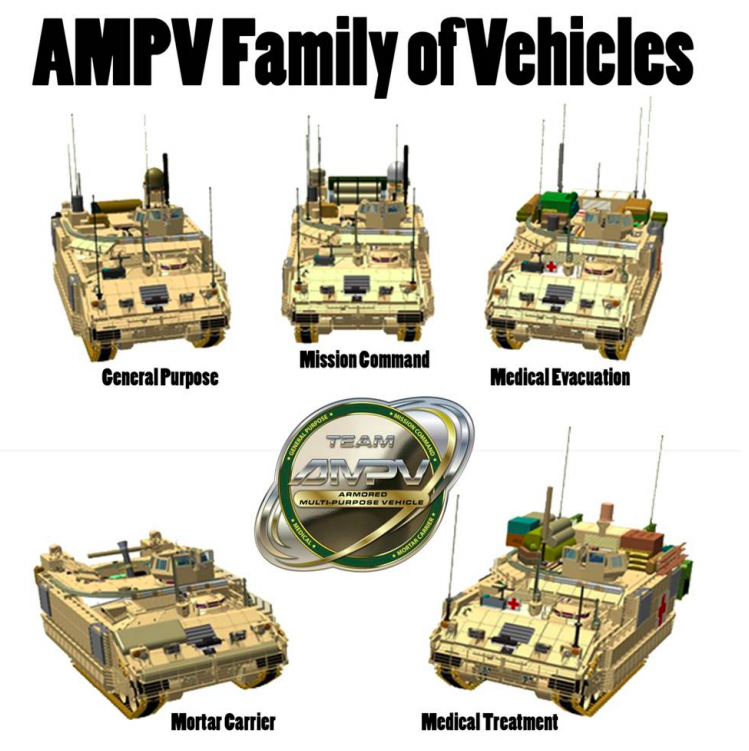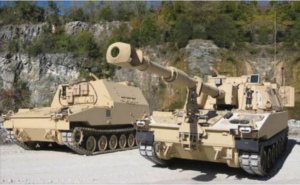
A medical variant of the BAE Armored Multi-Purpose Vehicle.
WASHINGTON: From armored command posts to mobile surgeries, the variants of the Armored Multi-Purpose Vehicle are finally entering Army hands.
For decades, the Army relied on variants of the Vietnam-vintage M113, a lightly armored box on tracks, to play a range of supporting roles. Now, after years of development and months of delays, the M113’s long-awaited replacements are coming fast.
On the last day of August, the Army formally accepted the first two production-model AMPVs from manufacturer BAE Systems. Both were the mobile command post variant, whose sophisticated communications and computers make it arguably the most technologically complex of the AMPV family.
The rest of the variants arrive thi fall. In November, the first general-purpose transport variant — arguably the simplest model of the AMPV — should be followed by the mortar carrier and armored ambulance variants. Last, probably in December, comes the Medical Treatment Vehicle, an armored, mobile operating room to let surgeons treat the wounded right behind the front line.

The five AMPV variants.
Producing so many variants in parallel is far from easy. “AMPV’s doing well,” Army project manager Bryan McVeigh told me, “[but] each one of those is putting different stresses on the production line.”
The pandemic wasn’t the only problem. BAE’s York, Penn. plant has decades of experience building and upgrading the M2 Bradley, a heavily armed and armored troop carrier from which the AMPV design is derived. But York struggled with quality-control issues as it ramped up production both of AMPV and of the M109A7 Paladin howitzer, which upgrades the Cold War M109 with Bradley-derived automotive components.
One issue was the move to more advanced manufacturing techniques, McVeigh told me. “On the AMPV side, we were starting off with a lot of robotic welding systems… a new technology that’s basically able to pick up an entire vehicle and spin it and do the laser welding,” he said. “There’s a learning curve associated with that, and that was BAE’s initial challenge.”

M109A7 Paladin and its armored ammunition carrier.
“Right before COVID hit we were starting to see those quality issues being resolved,” he said. “I still think we’re fine with those, but COVID came at a real bad time.”
The robotic welding systems will be applied to the Paladin production line in the future, added the project manager, Col. Timothy Fuller. Paladin is currently welded the old-fashioned way, by humans, and it did experience quality-control problems with those welds in previous years, Fuller acknowledged. But BAE added more inspections earlier in the process and the welders themselves have grown more experienced.
“We went from finding a litany of weld problems [to] seeing very few weld issues” today, he told me. BAE’s been delivering Paladin at full rate since late last year.
The Army’s remaining concerns are less about BAE itself than about its supply chain: the second, third, and even-fourth tier suppliers who make things like cables, connectors, and wiring. Many of them are small shops where a single worker going into quarantine can be a big disruption. “That’s our biggest challenge right now,” McVeigh told me. “We’re not out of the pandemic yet.”






















